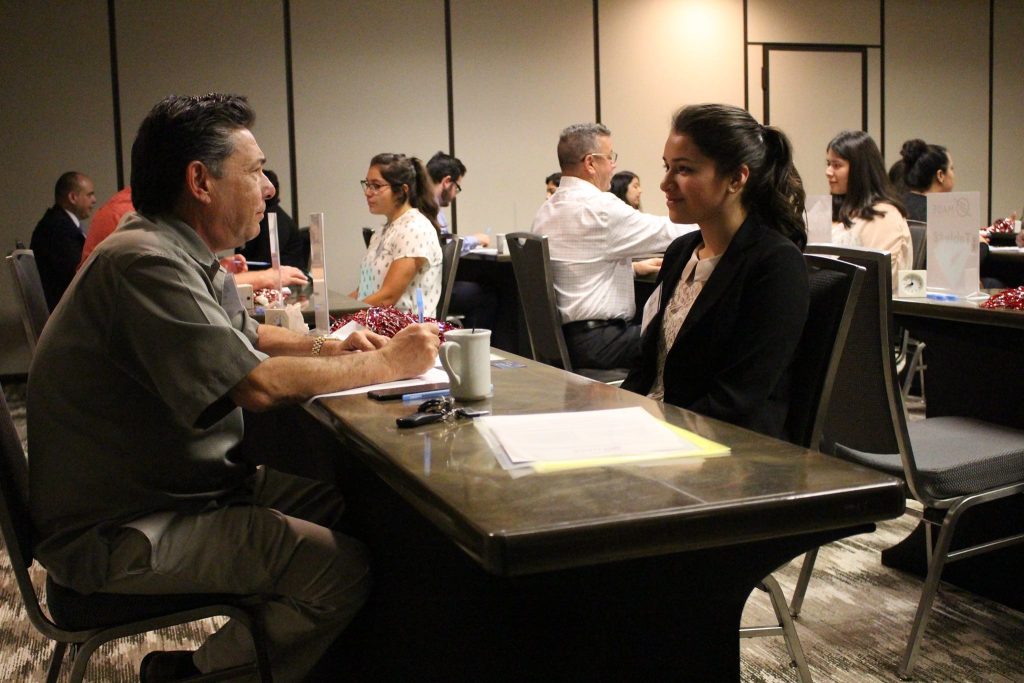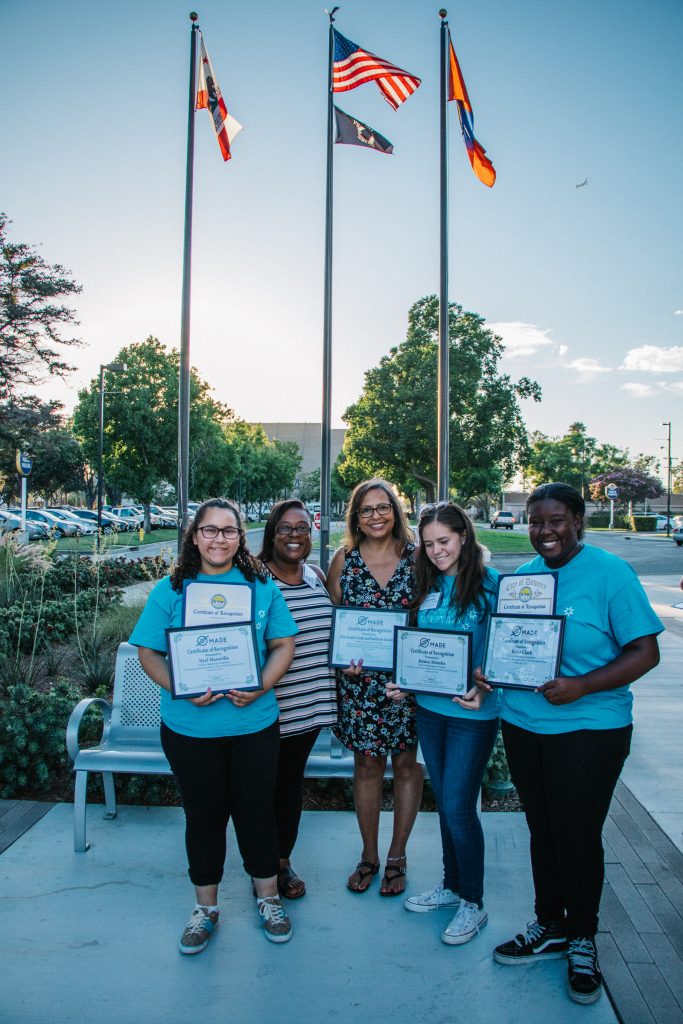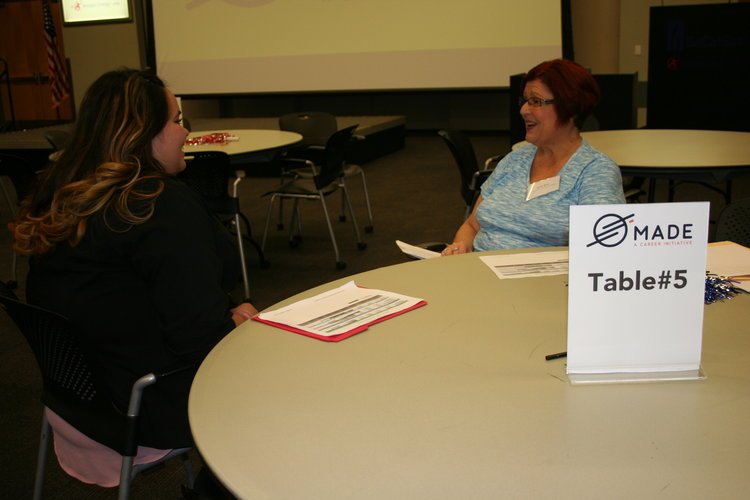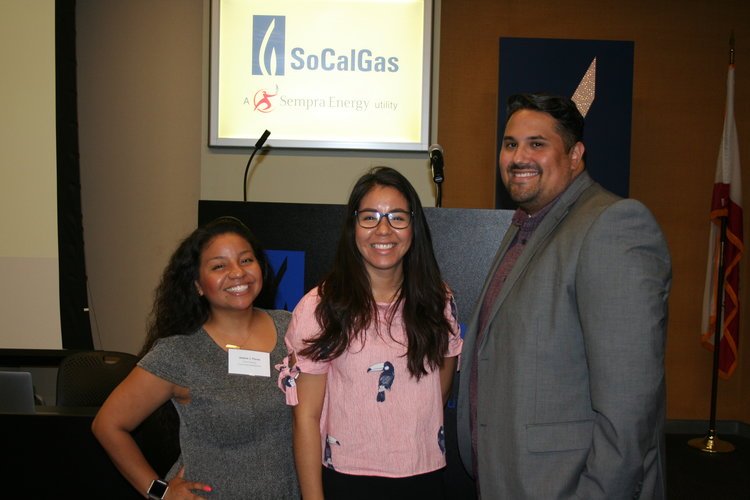A student who participated in the MADE Work Experience Program shares about his internship with community members at the Columbia Memorial Space Center. Image credit: Matthew ‘Nacho’ Ward.
Interactive seminars will teach students in Downey Unified School District to discover their strengths and build their futures.
By Carmen Tovar
When you think about our country’s future leaders, you envision strength, resilience, intelligence, determination, and the desire to make a difference. Here at Bayha Group, we’re very fortunate to be part of a movement encouraging high school students to have those skills and qualities.
Made for the Future.
The MADE Work Experience Program is a collaborative partnership between Bayha Group, Southeast Los Angeles County Workforce Development Board (SELACO WDB), and Downey Unified School District (DUSD). It’s an educational program designed to provide students with academic, technical, and employability skills to pursue higher education or ongoing learning and enter their chosen career fields with confidence. The MADE Work Experience Program is possible through California Career Pathways Trust grant funding from the California Department of Education, now in its third year at the District.
Working with both high schools in the District, Bayha Group will help deliver a number of “career readiness” seminars throughout the school year.
Learn by Doing: Objectives of the Program.
Being career ready is the name of the game. The MADE program gives students the opportunity to gain work experience placement, meet and interview with business leaders, and receive mentoring from industry professionals.
Personal development is also incredibly important for students when navigating their futures. As part of the program, students will gain a deeper understanding of their own strengths and values, build confidence, make new connections, and collaborate with peers.

Ready, Set, Go: Seminar 1, Lost and Found.
Mid-December and January marked the launch of the MADE Work Experience Program at Warren and Downey High Schools, both public comprehensive secondary schools in Downey, California. More than 500 high school juniors eager to take charge of their futures participated in the one-hour, kick-off seminars at both schools.
The first seminar, aptly titled “Lost and Found,” was all about students discovering their strengths and developing a roadmap to future success.
For many students, school isn’t always a positive experience–it can be a struggle both mentally and emotionally. About 3.6 million students are expected to graduate from high school in the U.S. in 2018. A large share of these students will leave school worried about what their future holds. Some will feel the odds are against them, or they may be conflicted about which direction to go in.
The MADE Program is designed to support students by giving them the tools to recognize and nurture their own strengths and values.
Future Thoughts: Challenging Students to Think About the Journey.
For many students, their sometimes skewed perception of success stops them from asking for help when they need it most. To overcome this hurdle, we started our first seminar by asking students to write down their long-term and short-term goals. This encouraged students to think about their immediate and future wants and needs. Many, for example, cited passing their end-of-year exams (short-term goal) or being accepted into college (long-term goal).
Next, we asked students to find quotes they found inspiring and put them in places where they could see them throughout the day: on a wall, as a screensaver, on their desk or in their locker. The purpose of this is to remind students there is no right or wrong way when it comes to their future. The goal is for students to believe in themselves, become more self aware of their strengths and skills, and gain strategies for better supporting themselves and others along their journey.
We wrapped up the session with some practical advice on subjects, such as how to identify their top skills, how to research careers, how to search for schools and colleges, ways to find job openings, and how to be successful in the job search. As part of this, we provided each student with access to Eureka–a career assessment website. The platform allows students to take quizzes and find out what careers may best match their interests. It also helps them to identify colleges and training programs as well as provides information about financial aid opportunities.
Just the Beginning.
We interviewed some past MADE Work Experience participants and they shared their experiences with us.
“I’m not afraid to get out of my comfort zone after the program. I’m open to joining other workshops and doing things that I’m not completely sure about. The unknown isn’t as scary.”
“I was really shy before this program, and now I feel more friendly and that I can do whatever I want.”
“I would definitely recommend this program to other underclassmen. It really helped me and was really beneficial.”

This month, we’ll host the second seminar –“Must Be at Least this Tall to Ride: A Guide to Fitting In, in the Workplace.”
If you’re interested in learning more about the MADE Work Experience Program at Downey Unified School District, visit the Downey MADE website or follow us on Facebook for photos and updates.




